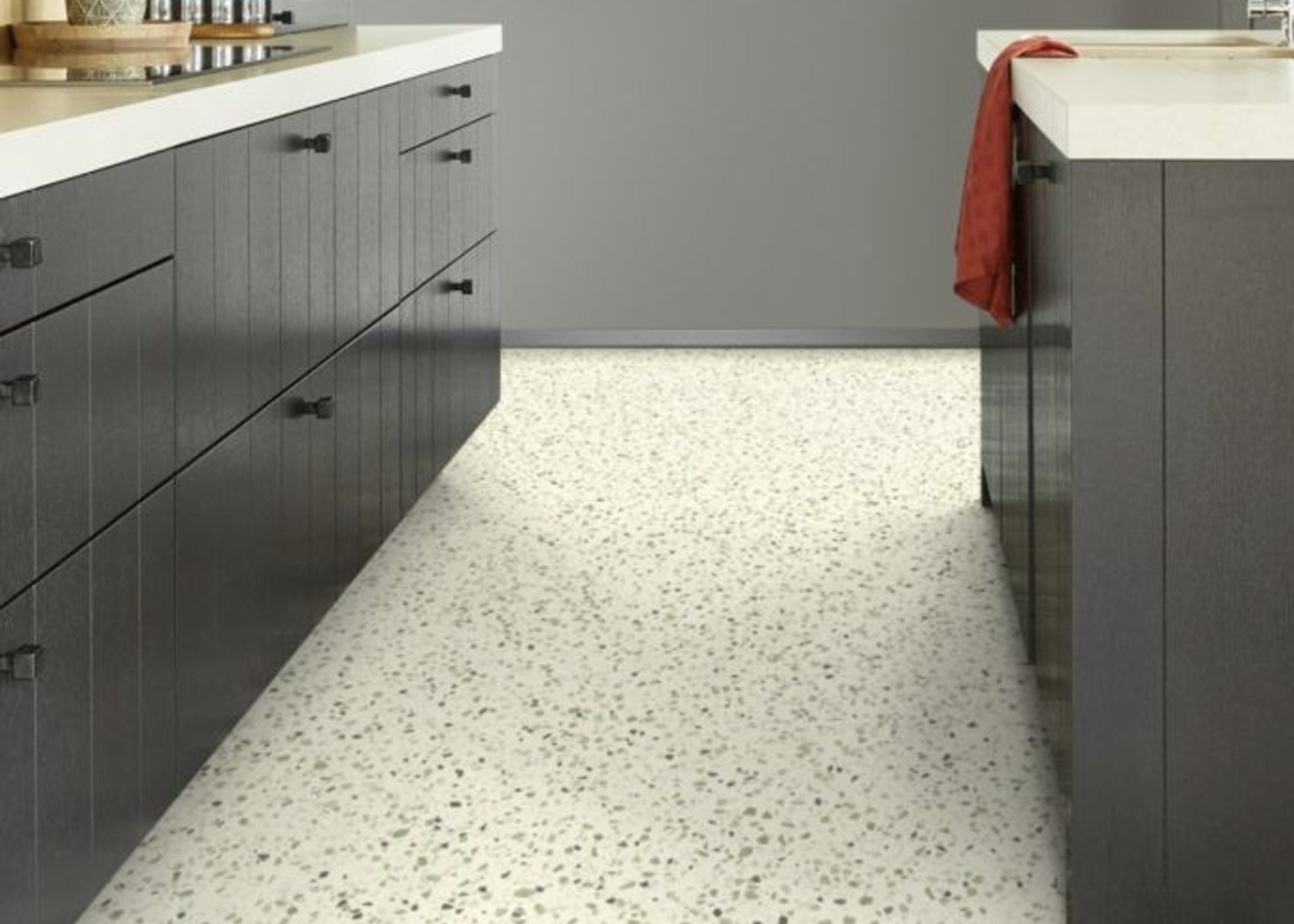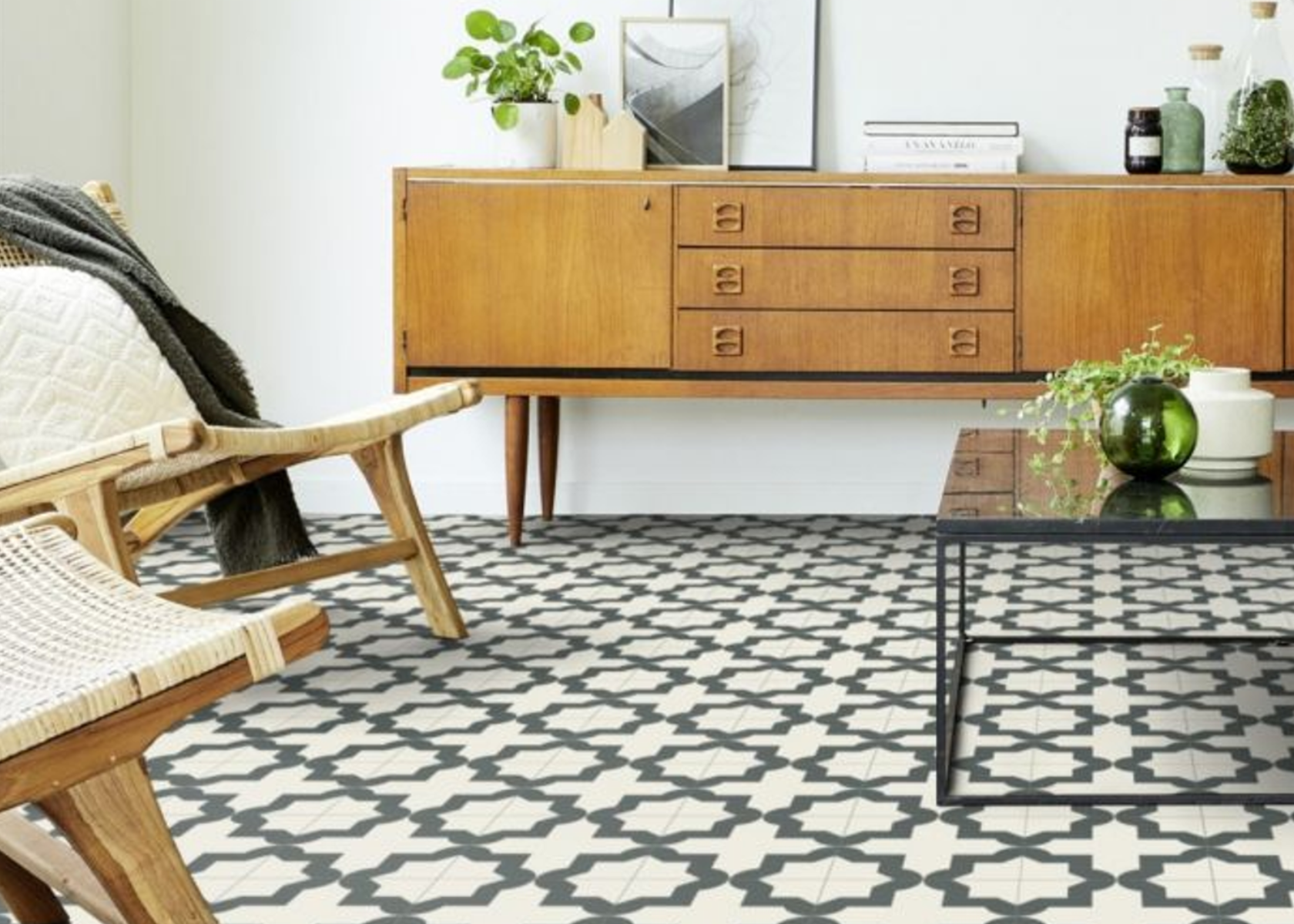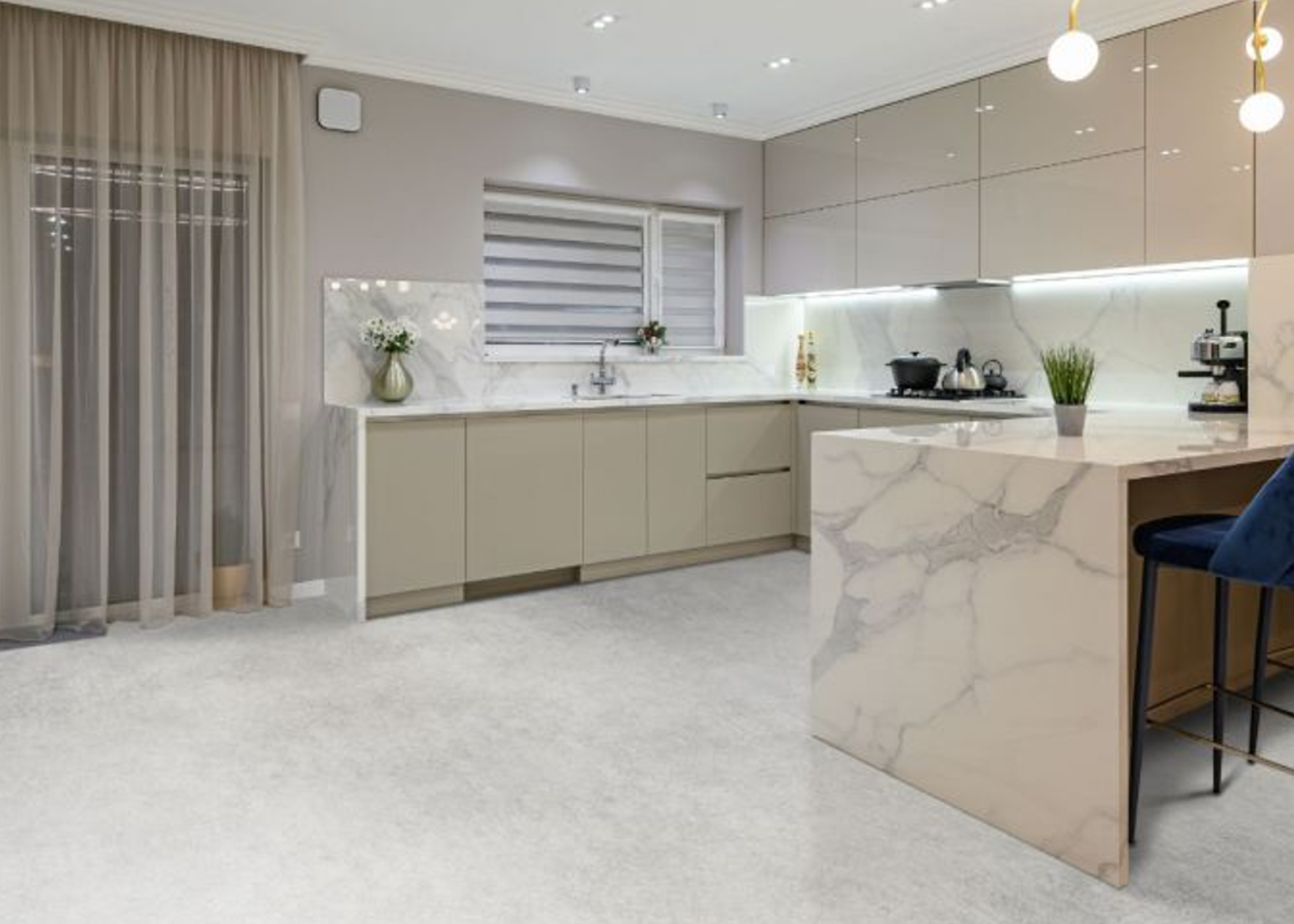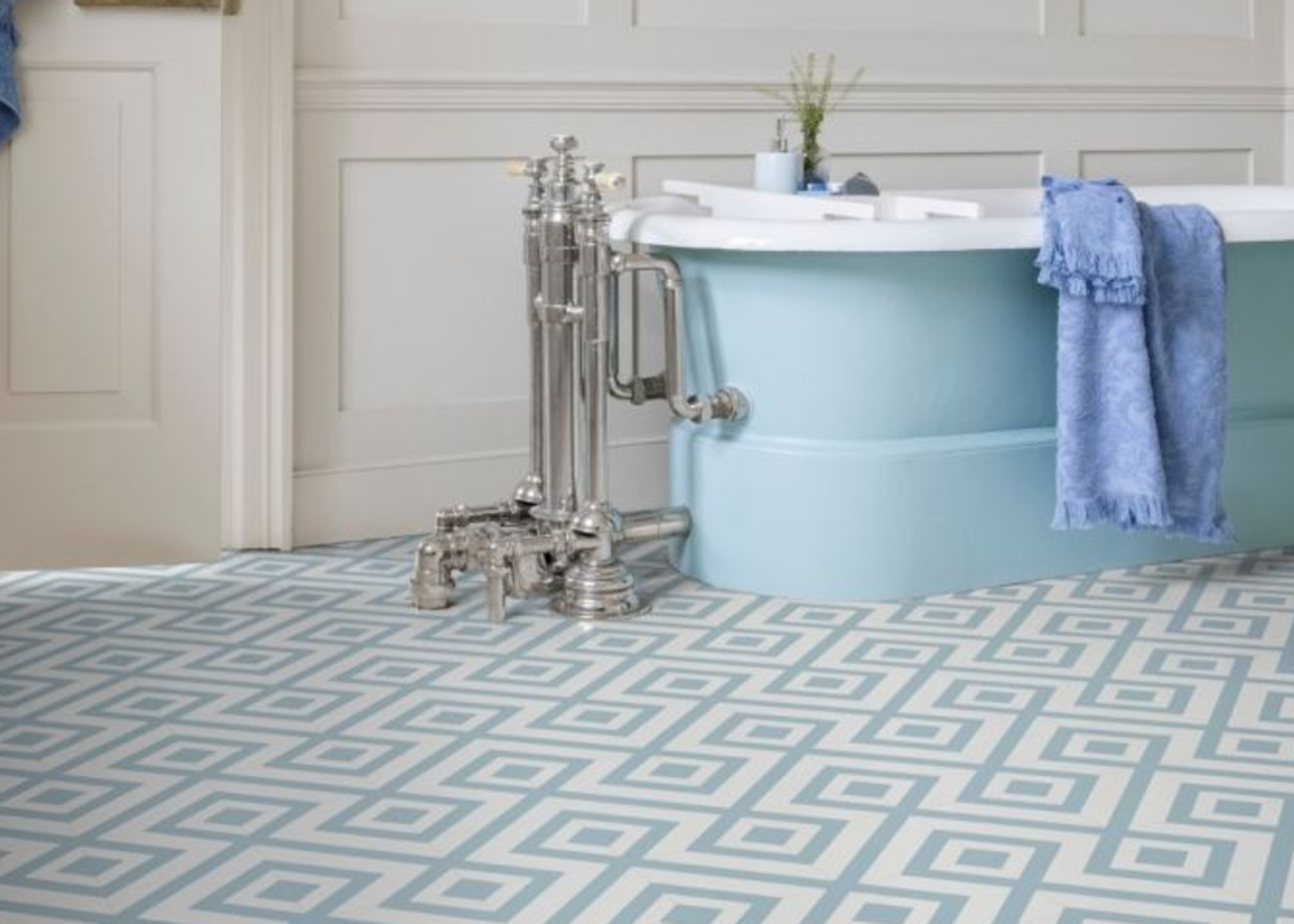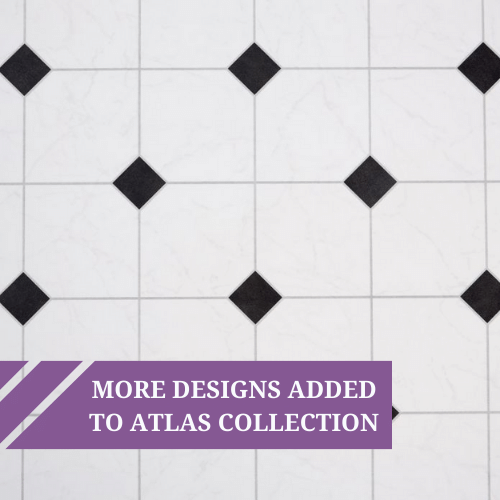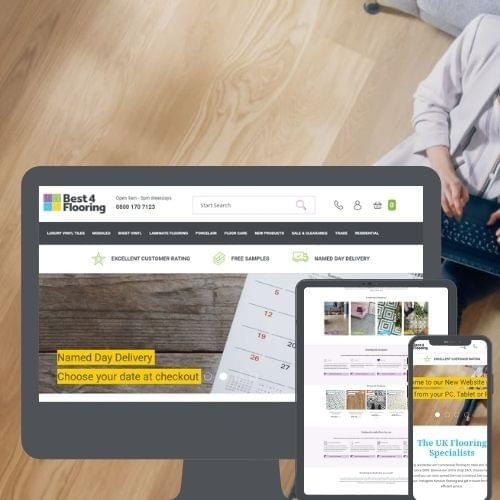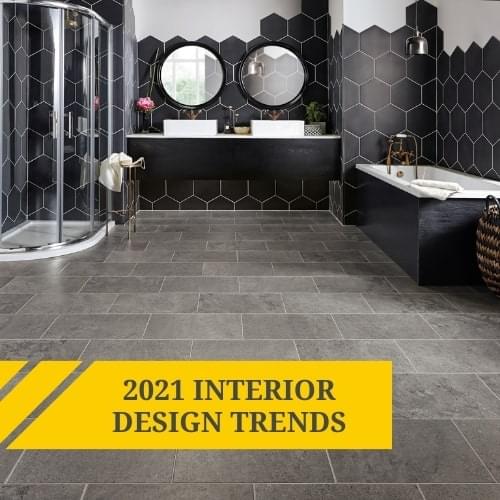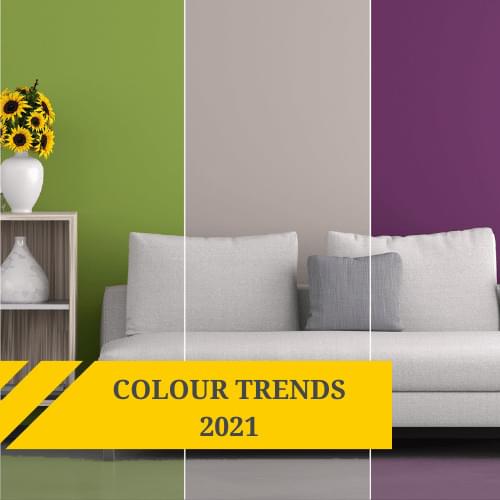In the world of interior design and home improvement, sheet vinyl flooring remains a staple with its blend of versatility, durability, and affordability. Yet, despite its popularity, sheet vinyl often leaves homeowners and DIY enthusiasts with questions.
Whether you're considering a flooring revamp or looking to upgrade a rental property, understanding the nuances of sheet vinyl is key to making the right choice.
Before we get started, what is sheet vinyl flooring? Sheet vinyl flooring is a versatile and durable flooring option made from vinyl. It comes in large, flexible sheets as opposed to individual tiles or planks. This flooring is known for its water-resistant properties, making it ideal for kitchens, bathrooms, and other areas prone to moisture. Its seamless nature also contributes to a lower risk of water damage and underfoot comfort, alongside a wide variety of design options to mimic the appearance of natural materials like stone and wood.
In this comprehensive guide, we're demystifying sheet vinyl by addressing the top FAQs. Each of these will provide you with the knowledge you need to confidently select and install this versatile flooring option. At Best4Flooring, we're committed to providing our customers with the best products and information, so let's get started!
Q1: Does Sheet Vinyl Flooring Need to Acclimatise?
Yes, before you lay down your new sheet vinyl flooring, we recommend allowing it to acclimatise to the environment where it will be installed. This will help the material adjust to the room's temperature and humidity, preventing issues such as buckling or shrinking post-installation.
Ultimately, this small step can make a big difference in the success and longevity of your flooring installation. Read our blog post for more information on how to acclimatise your sheet vinyl flooring.
Q2: How Much Does Sheet Vinyl Cost?
One of sheet vinyl's most attractive features is its cost-effectiveness. Compared to other types of flooring, sheet vinyl typically falls on the lower end of the price spectrum, making it a popular choice for budget-conscious renovations. On average, you can expect to pay between £7 and £15 per square meter.
The price of sheet vinyl can vary depending on factors such as:
- Quality and type of material
- Design and style
- Thicknes
- Brand
Search our range of sheet vinyl flooring to find the perfect option for your budget and style.
Q3: Is Sheet Vinyl the Same as Linoleum?
While sheet vinyl and linoleum are similar in their application and seamless look, they are not the same material. Linoleum is a natural product made from linseed oil, resins, and wood flour, whereas sheet vinyl is a synthetic product typically crafted from PVC or sometimes a combination of limestone for added durability.
Both materials are popular choices for kitchens and bathrooms due to their waterproof properties, but sheet vinyl tends to be more budget-friendly.
Q4: How to Remove Sheet Vinyl Flooring
Removing your sheet vinyl flooring may seem like a daunting task, but with the right tools and techniques, it can be done efficiently. Here's a step-by-step guide on how to remove sheet vinyl flooring:
Step 1: Prepare the Area: Clear out the room and remove any furniture or appliances. Disconnect any electronics or gas appliances, and ensure proper ventilation.
Step 2: Peel Back the Flooring: Find a loose corner and use a putty knife to begin peeling back the vinyl. If the vinyl is firmly secured, you may need to apply heat or a specialised adhesive remover.
Step 3: Remove the Adhesive: Once you've peeled away the vinyl, you'll need to clear the subfloor of adhesive residue. This can be a labour-intensive process, so be sure to wear protective gear and work in a well-ventilated area.
Q5: How to Fit Sheet Vinyl Flooring?
Fitting sheet vinyl flooring can be achieved easily with some preparation and the right tools. Begin by measuring your room accurately to ensure you order enough material, allowing a little extra for trimming.
The subfloor must be clean, dry, and smooth before getting started with laying down the vinyl. For larger rooms, it might be necessary to join two pieces of vinyl, which requires precise cutting and seaming. Once laid, use a roller to press the vinyl into place, working from the centre outwards to eliminate any air bubbles.
Read our dedicated guide for detailed steps on fitting sheet vinyl flooring to help you achieve the best possible results.
Q6: What is a Good Thickness for Sheet Vinyl Flooring?
The ideal thickness for sheet vinyl flooring often depends on the level of foot traffic in the area where it will be installed. Generally, a thickness of 2.0mm to 3.0mm is suitable for most residential areas, while commercial spaces may require a thicker option ranging from 3.0mm to 4.5mm.
It's also important to consider the subfloor and any underlayment used when determining the appropriate thickness for your sheet vinyl flooring. For example, if you have a concrete subfloor, you may need thicker vinyl to help with insulation and comfort underfoot.
Q7: What is Loose Lay Sheet Vinyl Flooring?
Loose lay sheet vinyl flooring is a unique type of vinyl flooring that does not require adhesive or click-lock systems to install. Instead, the weight and friction of the material itself keep it in place.
This feature makes loose-lay vinyl especially appealing for temporary applications or where quick and easy installation is desired. It's also beneficial for situations where the subfloor might not be perfectly smooth, as the weight of the vinyl can help to smooth out minor imperfections.
Q8: How to Cut Sheet Vinyl Around Objects?
Cutting sheet vinyl flooring around objects such as pipes, cabinets, or toilets requires precision and attention to detail. Initially, create a paper template of the area, ensuring that all objects you need to cut around are included. This approach ensures accuracy when transferring the design onto the actual sheet vinyl.
With a sharp utility knife, carefully execute the cuts, making several smaller incisions if dealing with intricately shaped objects. Cutting the vinyl slightly larger than your template to guarantee a snug fit around the object is advisable. Afterwards, any excess material can be trimmed away for a clean and professional finish.
Our Team Can Help!
Explore our range of quality sheet vinyl options, or if you need any help, feel free to get in touch with our expert team. We're here to ensure your experience is as seamless as your flooring!
Our team can provide guidance on installation and maintenance and answer any questions you may have about sheet vinyl flooring. So don't hesitate to reach out and let us help you find the perfect flooring solution for your space.






